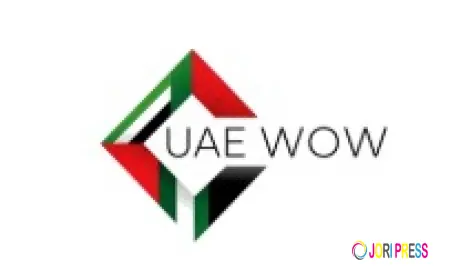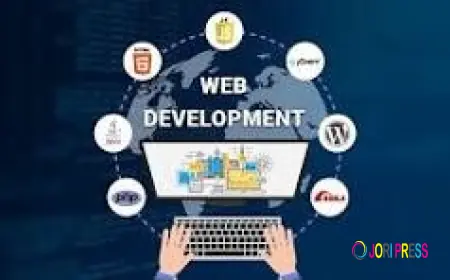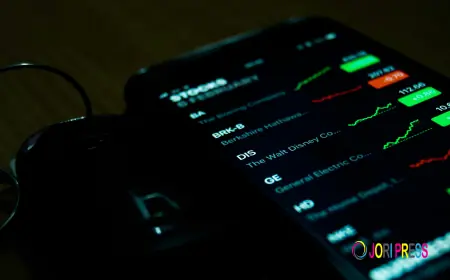Personal Luxury Goods Market: Key Drivers & Trends
According to TechSci Research, the market was valued at USD 412.65 billion in 2024 and is projected to reach USD 578.76 billion by 2030, growing at a CAGR of 5.8% during the forecast period.

Market Overview
The global Personal Luxury Goods Market is undergoing a profound transformation, reflecting the interplay between evolving consumer values, the democratization of luxury, and unprecedented advancements in digital engagement. According to TechSci Research, the market was valued at USD 412.65 billion in 2024 and is projected to reach USD 578.76 billion by 2030, growing at a CAGR of 5.8% during the forecast period.
Historically, luxury was synonymous with exclusivity, heritage craftsmanship, and limited accessibility. While these attributes remain relevant, today’s definition of luxury has broadened to encompass emotional resonance, ethical alignment, and lifestyle integration. Consumers are increasingly evaluating brands not just by their craftsmanship or prestige, but by the values they represent, their environmental footprint, and the emotional connection they foster.
Luxury consumption is no longer the privilege of an elite few—it is now an expression of personal identity for a widening affluent class across the globe. From high-net-worth individuals in Europe to emerging aspirational buyers in Asia-Pacific, the global luxury ecosystem is being reshaped by cultural inclusivity, technological innovation, and changing definitions of exclusivity.
Industry Key Highlights
- Market Size 2024: USD 412.65 billion
- Forecast 2030: USD 578.76 billion
- CAGR (2024–2030): 5.8%
- Fastest-Growing Product Segment: Cosmetics and Fragrances
- Fastest-Growing Sales Channel: Online/E-Commerce Platforms
- Leading Growth Region: Asia-Pacific, driven by China, India, and Southeast Asia
- Key Trend: Hyper-localized strategies for cultural relevance in different markets
- Major Players: Gucci, Cartier, Tiffany & Co., Rolex, BVLGARI, Kering, Louis Vuitton, Richemont, Chanel, Prada
Download Free Sample Report - https://www.techsciresearch.com/sample-report.aspx?cid=28544
Market Dynamics
1. Market Drivers
- a) Digital Transformation of Luxury
The rise of digital-first strategies is revolutionizing how consumers interact with luxury brands. Social media platforms like Instagram, TikTok, and WeChat are becoming essential storytelling arenas for brands to showcase exclusivity, behind-the-scenes craftsmanship, and cultural collaborations. AI-driven personalization, virtual try-on technologies, and immersive e-commerce experiences are enhancing both accessibility and brand intimacy. - b) Rising Affluence in Emerging Economies
Rapid economic growth in Asia-Pacific, Middle East, and Latin America has created a burgeoning upper-middle class with disposable income to spend on luxury products. Tier-2 and Tier-3 cities in China and India are now luxury hotspots, driven by aspirational consumption patterns and localized retail investments. - c) Shift Toward Sustainable and Ethical Luxury
Consumers—especially younger demographics—are holding brands accountable for their environmental and social impact. Demand for ethically sourced materials, carbon-neutral operations, and transparent supply chains is growing. Brands adopting circular fashion models, offering product repair services, or using eco-certified materials are gaining competitive advantage. - d) Expansion of Accessible Luxury Segments
Categories such as fragrances, cosmetics, and small leather goods allow entry-level consumers to connect with luxury brands without committing to higher-ticket purchases. This “gateway” approach fosters long-term loyalty and increases brand reach.
2. Market Challenges
- a) Economic Volatility
Fluctuations in currency exchange rates, inflationary pressures, and geopolitical tensions impact consumer sentiment and discretionary spending in the luxury segment. - b) Authenticity Concerns in Digital Channels
As online luxury sales increase, counterfeit risks also rise. Ensuring product authentication, premium delivery experiences, and consumer trust is critical. - c) Balancing Exclusivity with Accessibility
While expanding into new consumer segments boosts revenue, overexposure risks diluting a brand’s prestige. Maintaining scarcity while growing market share is a delicate balance. - d) Supply Chain Vulnerabilities
From raw material price volatility to geopolitical trade restrictions, the supply chain for luxury goods remains vulnerable to disruption.
Segmentation Analysis
By Product Category
- Cosmetics & Fragrances – Fastest-growing segment, benefiting from influencer marketing, ethical beauty trends, and gender-neutral product lines.
- Apparel & Footwear – Driven by both heritage brands and collaborations with streetwear labels.
- Watches & Jewelry – Symbolizing heritage and craftsmanship, with high demand from collectors and investors.
- Handbags & Accessories – Status symbols with high resale value, benefiting from limited edition drops.
- Leather Goods – Continues to be a core segment for traditional luxury houses.
By Sales Channel
- Online Channels – Post-pandemic, luxury e-commerce platforms and brand-owned websites have become critical revenue streams.
- Brick-and-Mortar Stores – Still essential for immersive brand experiences.
- Department Stores & Multi-Brand Boutiques – Offer variety and cross-brand exposure.
- Direct-to-Consumer (DTC) – Increasingly used for control over brand narrative and customer relationships.
By Region
- Asia-Pacific – Fastest-growing, led by China, India, South Korea, and Southeast Asia.
- Europe – Heritage hub with iconic luxury houses headquartered here.
- North America – Mature market with high brand loyalty.
- Middle East & Africa – Growing affluence, driven by tourism and cultural openness to luxury.
- Latin America – Emerging interest in accessible luxury categories.
Emerging Trends in the Personal Luxury Goods Market
1. Hyper-Localization of Products and Campaigns
Brands are curating region-specific collections aligned with local cultural events—Diwali-inspired jewelry in India, Lunar New Year capsule collections in China, and Ramadan-themed accessories in the Middle East.
2. Resale and Circular Luxury
Luxury resale platforms such as Vestiaire Collective and The RealReal are gaining traction, appealing to eco-conscious buyers and expanding the lifespan of luxury items.
3. Phygital Luxury
Merging physical experiences with digital enhancements—such as AR-powered in-store experiences, NFT-linked purchases, and blockchain-based product authentication.
4. Celebrity & Influencer Collaborations
High-profile partnerships are redefining luxury’s cultural relevance. Collaborations between heritage brands and contemporary artists or influencers create limited-edition hype.
5. Gender Fluidity in Design
Luxury brands are moving towards gender-neutral collections, reflecting inclusivity and modern identity expressions.
Competitive Analysis
The global luxury market is dominated by a mix of heritage maisons and innovative newcomers:
- Gucci S.p.A. – Known for bold designs, strong celebrity endorsements, and digital experimentation.
- Cartier International SNC – A leader in fine jewelry and watches, blending heritage with modern appeal.
- Tiffany & Co. – Leveraging its legacy in jewelry with a renewed youthful branding strategy.
- Rolex SA – Symbol of timeless craftsmanship and investment-grade watches.
- BVLGARI – Iconic for blending Italian artistry with bold design.
- Kering S.A. – Diversified portfolio including Gucci, Saint Laurent, and Bottega Veneta.
- Louis Vuitton Malletier – Market leader in handbags, leather goods, and experiential retail.
- Compagnie Financière Richemont SA – Strong in jewelry and watches, with brands like Cartier and Van Cleef & Arpels.
- Chanel S.A. – Maintains exclusivity through limited distribution and iconic branding.
- Prada S.p.A. – Known for innovation and sustainability-driven initiatives.
Future Outlook
The next decade of the personal luxury goods market will be defined by value-driven growth, digital craftsmanship, and sustainability leadership. Brands that balance heritage with innovation, exclusivity with inclusivity, and physical with digital engagement will thrive.
- Asia-Pacific will remain the primary growth engine.
- Digital-first strategies will dominate, with e-commerce potentially accounting for over 25% of luxury sales by 2030.
- Sustainable luxury will shift from a niche differentiator to an industry standard.
- Luxury tourism will recover strongly, fueling cross-border spending.
- Personalized luxury experiences will become as important as the products themselves.
10 Benefits of the Research Report
- Detailed market size and forecast analysis (2020–2030F)
- Insights into fastest-growing product segments and sales channels
- Regional performance mapping with growth opportunities
- Competitive landscape profiling top global players
- Analysis of emerging market trends and consumer behavior shifts
- Identification of key growth drivers and challenges
- Strategic recommendations for market entry and expansion
- Data-driven insights for investment decision-making
- Sector-specific risks and mitigation strategies
- Customization options to address unique business needs
Contact Us-
TechSci Research LLC
420 Lexington Avenue, Suite 300,
New York, United States- 10170
M: +13322586602
Website: www.techsciresearch.com
What's Your Reaction?
 Like
0
Like
0
 Dislike
0
Dislike
0
 Love
0
Love
0
 Funny
0
Funny
0
 Angry
0
Angry
0
 Sad
0
Sad
0
 Wow
0
Wow
0



















































